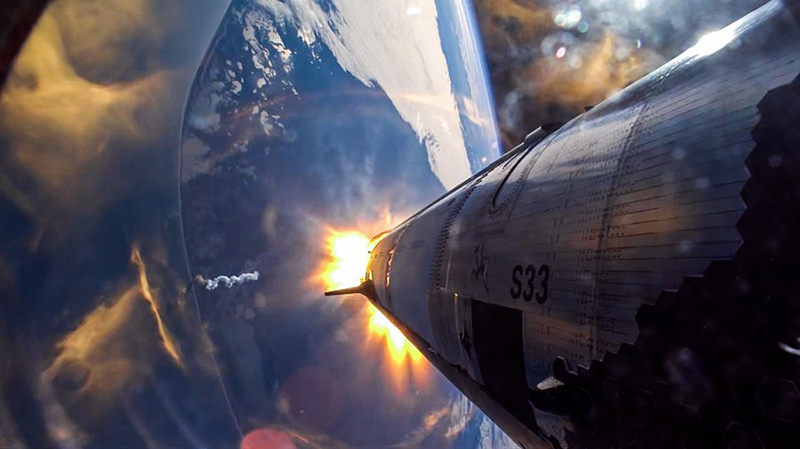It’s possible that the next Starship test launch will take place as early as the end of this week, on Friday, February 28. SpaceX CEO Elon Musk posted on the social media site X that “Starship Flight 8 is flying Friday,” along with a photo taken by the onboard camera of the Super Heavy booster, Starship’s first stage.

Image source: X
The previous test flight (Starship Flight 7), conducted more than a month ago, was interrupted by an explosion of the spacecraft’s upper stage, after which further launches were banned while the Federal Aviation Administration (FAA) investigated the circumstances of the incident.
In anticipation of FAA approval for the next Starship launch, the company conducted an engine burn in early February. According to a SpaceX statement to the Federal Communications Commission (FCC), the launch window for the ship will open on February 24. SpaceX is expected to make an official announcement once the regulator approves the launch.
With the seventh test flight ending early and most of the planned tests not being completed, Starship’s eighth flight is expected to be a repeat of the January tests. SpaceX will focus on collecting data on how the upper stage systems are performing during reentry.
It is also possible that during the flight, Starship will deploy 10 payload mockups similar in size and mass to the Starlink satellites in orbit. They will follow the ship on a suborbital trajectory and enter the waters of an uninhabited area of the Indian Ocean. Such a test was supposed to take place during the last flight. In addition, the program for the seventh flight included the launch of one of the Raptor engines in orbit, which was previously accomplished during the sixth test flight. These engines will allow future ships to maneuver in low Earth orbit and travel further, including to the Moon and Mars.
But SpaceX must first master the technology for orbital refueling of the Starship upper stage. NASA expects the company to test the process of transferring fuel from one Starship to another in 2025, as it is a key element of the US space agency’s program to fly to the Moon and, eventually, to Mars.